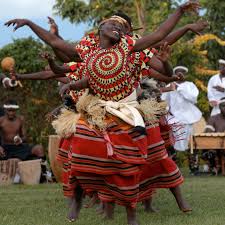THE MARTYRS OF UGANDA
The arrival of the Christian missionaries, Anglican and Catholic, set the stage for new developments, and marked a turning point in the religious life of the people of Buganda; as well as the political structure of the kingdom and Tourism sector as well. The history of Buganda from this point on took a different turn. A social revolution that was to transform all aspects of people’s lives had set in, and the events that followed, unpredictable as they were, added to the discomfort the new changes had brought about. The untimely death of Mutesa I in 1884 just a few years after the arrival of the missionaries, left the kingdom in the hands of Mwanga II, a youth whose ruling style fell far short of the charisma and political astuteness his late father had demonstrated in dealing with the foreigners.
Mutesa had the astuteness and maturity of dealing with conflicting forces that struggled to influence his court. The Arabs (the Moslems), the Catholics (the French or Bafaransa as they were locally called) or the Protestants (the English or Bangereza) operated, of course not without constraint, with some minimal success during his reign. He let his subjects of all ranks to join any creed of their choice. The Arabs also having seen the Christian missionaries’ efforts to convert the local people also diligently started to teach Islam. There was a competitive struggle among the preachers of the new creeds each attempting to assert more influence and recognition among the most influential officials in the inner circle of the king’s court. The king himself never committed to any single creed. The Moslems denounced him for his refusal to be circumcised, and he could not be baptized in the Christian denominations because he did not want to give up polygamy. He died still a traditionalist.
The Christian religion was received with much excitement by the converts but it came with its own requirements. It denounced all the native religious behavior and practices as heathen and satanic. Therefore joining it meant a commitment to break away from the old life style, make and adopt new alliances, and adjust to new moral and religious standards, adherence and allegiance. The new flock of believers (abasomi, or readers, as they were called) therefore, were seemingly regarded as ‘rebels’ who had transferred their loyalty to new religious systems thus abandoning the old tribal traditions.
Although Mwanga had shown some love for the missionaries as a young prince, his attitude changed when he became king. The once lively and enthusiastic prince in support of the missionaries turned into an intolerant and vicious persecutor of Christians and all foreigners. He felt, with good cause, that the powers and authority his predecessors had enjoyed were dwindling, and had disintegrated under the influence of the missionaries and their converts. The converts had diverted their loyalty to some other authority and their allegiance at all costs could no longer be counted on. For Mwanga, the ultimate humiliation was the insolence he received from the pages when they ( the least subservient of servants) resisted his homosexual advances. According to old tradition the king was the center of power and authority, and he could dispense with any life as he felt, hence the old saying Namunswa alya kunswaze (the queen ant feeds on her subjects). Although homosexuality is abhorred among the Baganda, it was unheard of for mere pages to reject the wishes of a king. (It is alleged that Mwanga learnt or acquired homosexual behavior from the Arabs). Given those conflicting values Mwanga was determined to rid his kingdom of the new teaching and its followers.
It was hardly a year after Mwanga’s assumption of the throne that he ordered the execution of Yusufu (Joseph) Rugarama, Makko (Mark) Kakumba, and Nuwa (Noah) Serwanga the first three Christian martyrs, who were killed at Busega Natete on January 31, 1885. In October of 1885 the Anglican Bishop James Hannington recently dispatched to head the Eastern Equatorial Africa, headquartered in Buganda, was murdered in Busoga on his way to Buganda. Mwanga had ordered his death. Hannington’s crime was to attempt to come to Buganda through Busoga, a shorter route than that employed by earlier visitors who took the route from south of lake Victoria. Buganda’s kings regarded Busoga as a backdoor to Buganda and thought that any one coming through the backdoor must have evil intentions towards the kingdom.

Buganda cultural dance
Joseph Mukasa Balikuddembe, a senior advisor to the king and a Catholic convert, condemned Mwanga for ordering Hannington’s death without giving him (Hannington) a chance to defend himself as was customary. Mwanga was annoyed that Mukasa would question his actions, and he had him arrested and killed. On Nov. 15 1885; Mukasa became the first Catholic martyr, when he was beheaded at Nakivubo. Between December of 1885 and May of 1886 many more converts were wantonly murdered. Mwanga precipitated a showdown in May by ordering the converts to choose between their new faith, and complete obedience to his orders. Those unwilling to renounce their new faith would be subject to death. Courageously, the neophytes chose their faith. The execution of twenty six Christians at Namugongo on June 3, 1886 .This has now led to cultural safari in Uganda .The climax of the campaign against the converts. The last person killed in this crusade, was Jean-Marie Muzeeyi, who was beheaded at Mengo on Jan 27, 1887

